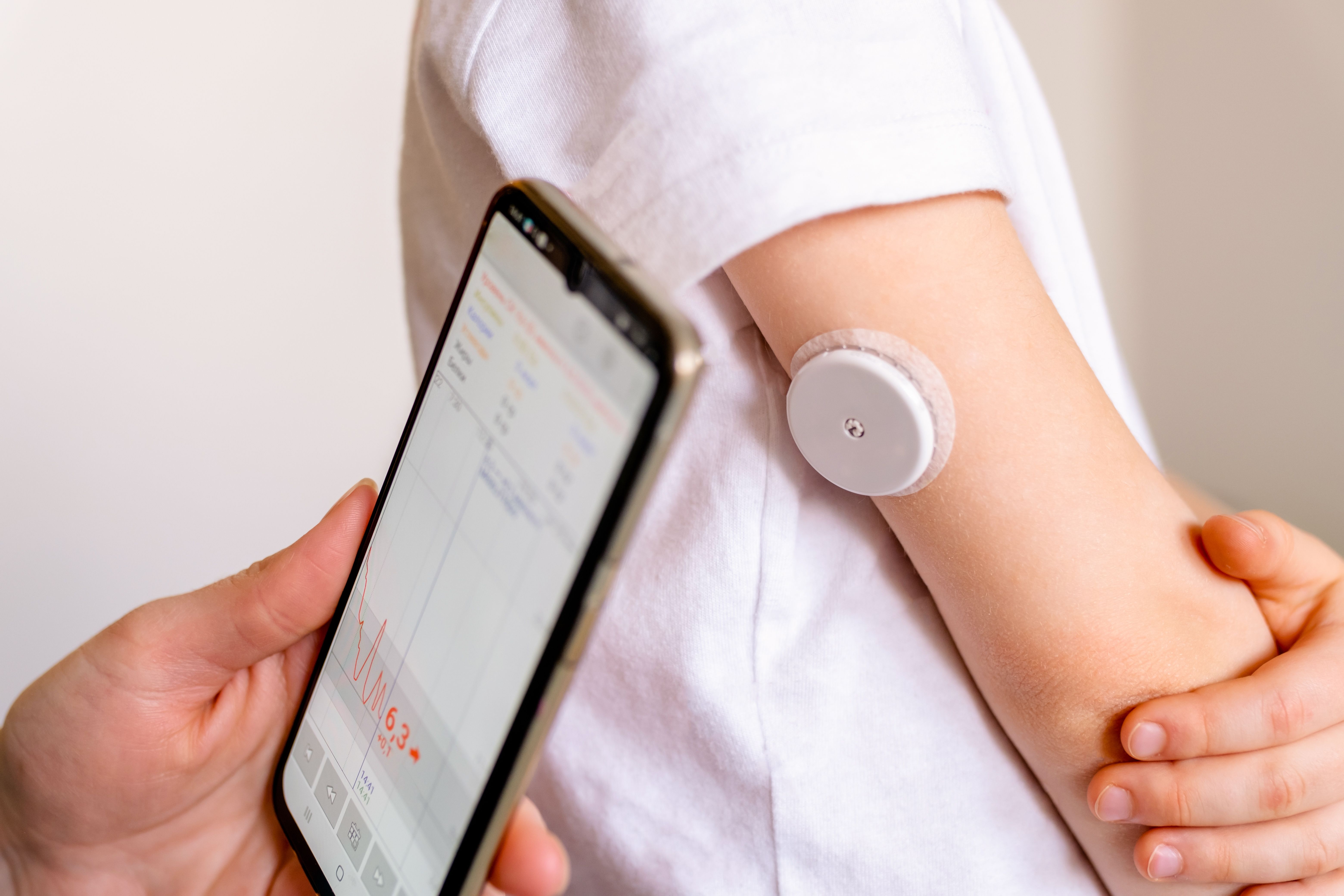CGMs help reduce hypoglycemic events in young children
A new report reviewed how effective the use of continuous glucose monitors (CGM) was over the course of a year.
CGMs help reduce hypoglycemic events in young children | Image Credit: © habrovich - © habrovich - stock.adobe.com.

Managing a healthy and balanced diet in very young children can be a challenge in and of itself, but for parents with young children who have type 1 diabetes (T1D), the challenges—and the stakes—increase.
A new report reviewed how effective the use of continuous glucose monitors (CGM) was in this age group over the course of a year, and found that CGM can be a promising tool for preventing hypoglycemia, but that success was limited when it came to hyperglycemic control.
The study, published in the Journal of Diabetes Science and Technology, found that time within the blood glucose range of 70 to 180 didn’t improve with CGM along, but that there was a decrease in hypoglycemic events.
Unpredictable behavior, moods, frequent childhood colds and infections, and spotty eating habits can make managing T1D even more difficult in very young children, the study notes. Plus, children in early childhood can have trouble putting their hyper- or hypoglycemic symptoms into words that accurately describe what they are feeling.
Although clinical trials in older children and adults show improvement in overall glycemic control when CGMs are used there has been little research on using these devices in younger children. Technology advances that have helped make CGMs smaller and more accurate might make using these tools easier to use in younger patient groups, but will they really help?
The researchers used the Strategies for Enhance New CGM use in Early childhood (SENCE) study to review the efficacy of CGMs alone and alongside behavioral family interventions. Nearly 150 children between the ages of 2 and 8 years were followed for about a year. Thirty-five percent of the children in the study were already using insulin pumps at the onset of the investigation, and 87% were new to the use of CGMs.
The amount of time spent in the target blood glucose range was not ideal and didn’t change much regardless of the intervention, according to the study.
Mean time spent in the target range of a blood glucose between 70 and 180 was about 37% across the study groups before intervention. However, after both standard CGM use and CGM use alongside behavioral interventions, the mean time in range increased only slightly, to about 41% to 44%. The study concluded that changes in mean glucose levels or HbA1c didn’t significantly change though in either group by the end of the study.
Where CGMs seemed the most helpful were in heading off hypoglycemic events, according to the report. In both the groups that used CGM alone and the group that used CGM alongside other interventions, the amount of time spent with blood glucose dipping under 70 decreased just 6 weeks after starting CGM therapy. The frequency of hypoglycemic events was less in the interventions groups by the end of the study than in control groups, according to the study. Severe hypoglycemic events where blood glucose dropped into the 50s and lower either overnight or during the day was reduced in both intervention groups.
Another improvement over previous studies was how much CGMs were worn, according to the study authors. Consistent wearing of CGM devices was improved in this study over previous studies, and data sharing of blood glucose readings with other was higher. This report found that CGMs were worn enough to decrease the number of finger sticks required for blood glucose monitoring from about 6 a day down to 4.
Overall, the study authors concluded that the study revealed increased compliance with CGM use among young children thanks to improvements in technology, and a significant reduction in hypoglycemic events. The increased use of these devices didn’t translate to a reduction in HbA1c levels or increase the amount of time users spent in target blood glucose ranges, though. More work needs to be done to improve diabetes technology, education, and behavioral support tools to help parents with young children avoid hypoglycemic events without sacrificing glycemic control, the study concludes.
Reference:
Van Name MA, Kanapka LG, DiMeglio LA, et al. Long-term Continuous Glucose Monitor Use in Very Young Children With Type 1 Diabetes: One-Year Results From the SENCE Study. J Diabetes Sci Technol. 2023;17(4):976-987. doi:10.1177/19322968221084667
Twiist automated insulin delivery system FDA cleared for children 6 years and up with T1D
March 18th 2024Integrated data from a continuous glucose monitoring device (CGM) and an insulin pump to automate insulin delivery allow AID systems to manage patient blood sugar levels more "effectively," according to Sequel.
Higher burden of care associated with loneliness in caregivers of children with type 1 diabetes
January 4th 2024Results demonstrated that caregiver burden scored a 2.14 on the caregiver burden scale, which is within the average burden level, though a higher burden of care is associated with a higher sense of loneliness. These results can help health care professionals develop a family-centered treatment plan.